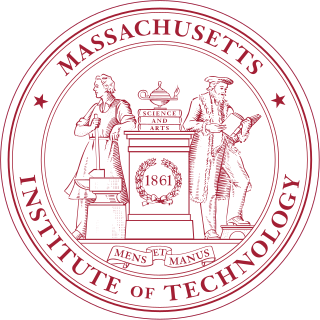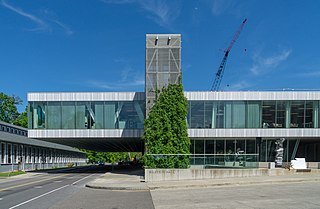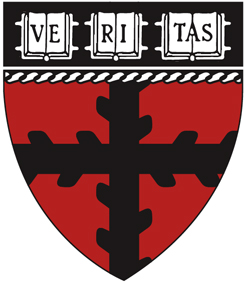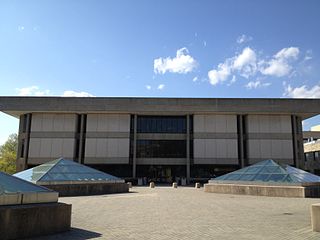Sloan School of Management
| | This section needs expansion. You can help by adding to it. (February 2008) |
The Sloan School of Management has one department (Management) and grants the S.B., S.M., and Ph.D.
Academics at the Massachusetts Institute of Technology are organized into 6 divisions containing 32 academic departments or faculties along with many interdisciplinary, affiliated, and intercollegiate research and degree programs. The Schools of Engineering, Science, Sloan School of Management, Humanities, Arts, and Social Sciences, Architecture and Urban Planning, and the Whitaker College of Health Sciences and Technology. [1]
The School of Science is composed of 6 academic departments and grants S.B., S.M., and Ph.D. or Sc.D degrees. The current dean of engineering is Professor Marc A. Kastner. With approximately 300 faculty members, 1200 graduate students, 1000 undergraduate majors, the school is the second largest at MIT. 16 faculty members and 16 alumni of the school have won Nobel Prizes. [2]
The Department of Biology (Course VII) began as a department of natural history in 1871.
The Department of Brain and Cognitive Sciences (Course IX) began as the Department of Psychology in 1964. [3]
The Department of Chemistry (Course V) was one of the original departments when MIT opened in 1865. [4]
The Department of Earth, Atmospheric and Planetary Sciences (Course XII or EAPS) traces its origins to the establishment of MIT by the eminent geologist William Barton Rogers in 1861. Before distinguishing himself as the University's founder and first president, Rogers was a professor of natural philosophy and chemistry. He also served as State Geologist of Virginia, which explains why geology courses have been taught at MIT for more than a century.
In 1983, EAPS was formed through the merger of two MIT departments: the Department of Earth and Planetary Sciences, which grew out of the first geology courses, and the Department of Meteorology and Physical Oceanography, which had its roots in the meteorology courses that first emerged at MIT in 1941.
Today, the department seeks to understand the fundamental workings of natural systems by examining physical, chemical, and biological processes occurring across a vast spectrum of time and space. Their highly integrated research requires direct observation as well as modeling, and the department thrives on interdisciplinary ventures that open new avenues of exploration. [5]
The Department of Mathematics (Course XVIII)
The Department of Physics (Course VIII)
The MIT School of Engineering is one of the five schools of the Massachusetts Institute of Technology, located in Cambridge, Massachusetts, United States. Generally considered having one of the best engineering programs in the world , the school has 8 academic departments and 1 interdisciplinary division and grants S.B., M.Eng., S.M., an engineer's degree, and Ph.D. or Sc.D degrees. The current dean of engineering is Professor Anantha P. Chandrakasan. The school is the largest at MIT as measured by undergraduate and graduate enrollments and faculty members. [6]
The Department of Aeronautics and Astronautics (Course XVI) was founded as a program within the Mechanical Engineering department in 1926 and became an independent department in 1939.
The Department of Biological Engineering (Course XX) was founded as a division in 1998 and became an independent department in 2005.
The Department of Chemical Engineering (Course X) was founded as a combined course of mechanical engineering and industrial chemistry in 1888 and became an independent department in 1920.
The Department of Civil and Environmental Engineering (Course I) offered classes in civil engineering since MIT's 1865 opening and was subject to repeated mergers with the departments of sanitary engineering and structural engineering before adopting its current name and organization in 1992.
The Department of Electrical Engineering and Computer Science (Course VI) is the largest department in the School of Engineering. Electrical engineering was originally taught within the Department of Physics, but a new degree program was offered in 1882, and the department became independent in 1902. [7]
The Engineering Systems Division was an interdisciplinary division within the School of Engineering, but was superseded by IDSS.
The Department of Materials Science and Engineering (Course III) can be traced back to a Department of Geology and Mining established at MIT's 1865 opening which later grew to encompass mining and metallurgy until the modern name was adopted in 1974.
The Department of Mechanical Engineering (Course II) was one of the original MIT departments. In 2004, the department adsorbed the Department of Ocean Engineering (Course XIII) which is now the Center for Ocean Engineering.
The Department of Nuclear Science and Engineering (Course XXII) was established in 1958, making it one of the oldest programs of its kind in the nation.
The School of Humanities, Arts, and Social Sciences (MIT SHASS) has 13 departments, department-level programs, and faculties granting S.B., S.M., and Ph.D. degrees. The current dean is professor of political science Melissa Nobles. The school teaches every MIT undergraduate — a total of about 4,500 students, each of whom takes a minimum of 8 humanities, arts, and social sciences classes, nearly 25% of their total class time. With approximately 180 faculty members, 337 graduate students, 130 undergraduate majors, 161 undergraduate minors, the school is the fourth largest at MIT. 3 Nobel Laureates, 8 MacArthur Fellows, and 5 Pulitzer Prize winners are on the faculty. [8]
The Anthropology program
The Comparative Media Studies and Writing program
The Department of Economics
The Global Studies and Languages program
The History faculty
The Department of Linguistics
The Literature faculty
The Music program
The Department of Philosophy
The Department of Political Science
The Program in Science, Technology, and Society
The Theatre Arts program
The Women's and Gender Studies program
The School of Architecture and Planning consists of 2 departments and grants S.B., S.M., and Ph.D. degrees. The current dean of architecture and planning is Professor Adèle Naudé Santos. [9]
The Department of Architecture
The Department of Urban Studies and Planning (DUSP)
Founded in 1933, DUSP has four specialization areas: City Design and Development; Environmental Policy; Housing, Community and Economic Development; and the International Development Group. There are also three cross-cutting areas of study: Transportation Planning and Policy, Urban Information Systems (UIS) and Regional Planning.
DUSP offers a two-year Master in City Planning (MCP) degree and a PhD in Urban and Regional Studies or Urban and Regional Planning. Under special circumstances, admission may be granted to candidates seeking a one-year Master of Science (SM) degree. DUSP also offer a Bachelor of Science (SB) in Planning, a five-year SB/MCP, and minors in Public Policy and in Urban Studies and Planning.
The Media Laboratory
| | This section needs expansion. You can help by adding to it. (February 2008) |
The Sloan School of Management has one department (Management) and grants the S.B., S.M., and Ph.D.
| | This section needs expansion. You can help by adding to it. (February 2008) |
The Whitaker College of Health Sciences and Technology grants several degrees.

The Massachusetts Institute of Technology (MIT) is a private research university in Cambridge, Massachusetts, United States. Established in 1861, MIT has played a significant role in the development of many areas of modern technology and science.

Thammasat University is a public research university in Thailand with campuses in Tha Phra Chan, Rangsit, Pattaya and Lampang Province. As of 2019, Thammasat University has over 33,000 students enrolled in 33 faculties, colleges, institutes and 2,700 academic staff.

Łódź University of Technology was created in 1945 and has developed into one of the biggest technical universities in Poland. Originally located in an old factory building, today it covers nearly 200,000 sq. meters in over 70 separate buildings, the majority of which are situated in the main University area. As of 2018, around 15,000 students studied at the university. The educational and scientific tasks of the university are carried out by about 3,000 staff members.

The College of Architecture, Art, and Planning (AAP) is the school of architecture at Cornell University in Ithaca, New York. It offers 20 undergraduate and graduate degrees in five departments: architecture, art, urban planning, real estate, and design technology. Aside from its main campus in Ithaca, AAP offers programs in Rome, Italy and in New York City, New York.

The University of Mazandaran is a public university located in the Mazandaran province of Iran, headquartered in the city of Babolsar. Currently the largest state higher education center in northern iran, it had formerly consisted of a number of tertiary education centers beginning in 1970. In 1979 the centers were officially merged to form what is now known as the University of Mazandaran.

The MIT Department of Physics has over 120 faculty members, is often cited as the largest physics department in the United States, and hosts top-ranked programs. It offers the SB, SM, PhD, and ScD degrees. Fourteen alumni of the department and nine current or former faculty members have won the Nobel Prize in Physics.The Department of Physics was born when MIT founder William Barton Rogers proposed in 1865 to bring their Mens et Manus philosophy to life by creating a new laboratory of physics and mechanics in another department’s back room.

The history of the Massachusetts Institute of Technology can be traced back to the 1861 incorporation of the "Massachusetts Institute of Technology and Boston Society of Natural History" led primarily by William Barton Rogers.
The College of Design at the Georgia Institute of Technology, established in 1908 as the Department of Architecture and also formerly called the College of Architecture, offered the first four-year course of study in architecture in the Southern United States.

The Faculty of Technical Sciences is a higher education institution located in Novi Sad, an independent part of the University of Novi Sad. It was founded on 18 May 1960 and today it is the largest faculty in Serbia by number of students and one of the largest in the region. As of 2020–21 academic year, it has a total of 15,742 students.
The MIT Electrical Engineering and Computer Science Department is an engineering department of the Massachusetts Institute of Technology in Cambridge, Massachusetts. It is regarded as one of the most prestigious in the world, and offers degrees of Master of Science, Master of Engineering, Doctor of Philosophy, and Doctor of Science.

The Harvard John A. Paulson School of Engineering and Applied Sciences (SEAS) is the engineering school within Harvard University's Faculty of Arts and Sciences, offering degrees in engineering and applied sciences to graduate students admitted directly to SEAS, and to undergraduates admitted first to Harvard College. Previously the Lawrence Scientific School and then the Division of Engineering and Applied Sciences, the Paulson School assumed its current structure in 2007. David C. Parkes has been its dean since 2023.

The MIT School of Engineering (SoE) is one of the five schools of the Massachusetts Institute of Technology, located in Cambridge, Massachusetts, United States. It was established in 1932 as part of the reorganization of the Institute recommended by President Karl Taylor Compton. SoE has eight academic departments and two interdisciplinary institutes. The School grants SB, MEng, SM, engineer's degrees, and PhD or ScD degrees. As of 2017, the Dean of Engineering is Professor Anantha Chandrakasan. The school is the largest at MIT as measured by undergraduate and graduate enrollments and faculty members.
The MIT School of Science is one of the five schools of the Massachusetts Institute of Technology, located in Cambridge, Massachusetts, United States. The School, which consolidated under the leadership of Karl Taylor Compton in 1932, is composed of 6 academic departments who grant SB, SM, and PhD or ScD degrees; as well as a number of affiliated laboratories and centers. As of 2020, the Dean of Science is Professor Nergis Mavalvala. With approximately 275 faculty members, 1100 graduate students, 700 undergraduate majors, 500 postdocs, and 400 research staff, the School is the second largest at MIT. As of 2019, 12 faculty members and 14 alumni of the School have won Nobel Prizes.
The MIT School of Humanities, Arts, and Social Sciences (SHASS) is one of the five schools of the Massachusetts Institute of Technology, located in Cambridge, Massachusetts, US. The school includes 11 academic areas and works alongside six departments, labs, and programs. SHASS grants SB, SM, and PhD degrees. Major fields of study include anthropology, comparative media studies and writing, economics, history, linguistics, literature, music, philosophy, political science, science, technology, and society, and theater arts. Other programs include the Center for International Studies; Knight Science Journalism; Science, Technology, and Society; Security Studies; and HyperStudio.

The MIT School of Architecture and Planning is one of the five schools of the Massachusetts Institute of Technology in Cambridge, Massachusetts. Founded in 1865 by William Robert Ware, the school offered the first architecture curriculum in the United States and was the first architecture program established within a university. MIT's Department of Architecture has consistently ranked among the top architecture/built environment schools in the world.

University of Kurdistan is the largest university in Iranian Kurdistan Province, located in the south of Sanandaj. The University of Kurdistan was ranked as the eighth top university in Iran in academic year 2007-2008 and was ranked as the first top developing university in Iran in academic year 2006–2007.

Gautam Buddha University ("GBU") is a university established by the Uttar Pradesh Gautam Buddha University Act 2002 and came into existence in 2008. It is approved by University Grants Commission (UGC) under section 12-B and accredited by National Assessment and Accreditation Council (NAAC) with B+ grade. It is located in Greater Noida, Gautam Buddha Nagar in Uttar Pradesh, India. It is one of Uttar Pradesh's state government universities which commenced its first academic session in the year 2008. The university campus is spread over 511 acres (207 ha) and offers Bachelors, Masters and Doctoral degrees in engineering, Business Administration, Computer Applications, Biotechnology and Buddhist Studies and is mainly focused on research.

The College of Architecture, Arts, and Design formerly the College of Architecture and Urban Studies at Virginia Tech consists of four schools, including the School of Architecture, which consistently ranks among the best in the country. Headquartered in Blacksburg, Virginia, the college also has sites in Alexandria, Virginia, and Riva San Vitale, Switzerland. Spread out among these three locations, the college consists of nearly 2,200 students, making it one of the largest schools of architecture in the nation.
The College of Science at Virginia Tech contains academic programs in eight departments: biology, chemistry, economics, geosciences, mathematics, physics, psychology, and statistics, as well as programs in the School of Neuroscience, the Academy of Integrated Science, and founded in 2020, an Academy of Data Science. For the 2018-209 academic year, the College of Science consisted of 419 faculty members, and 4,305 students, and 600 graduate students. The college was established in July 2003 after university restructuring split the College of Arts and Sciences, established in 1963, into two distinct colleges, the other half becoming the College of Liberal Arts and Human Sciences. Lay Nam Chang served as founding dean of the College of Science from 2003 until 2016. In 2016, Sally C. Morton was named dean of the College of Science. Morton served in that role until January 2021, when she departed for Arizona State University and Ronald D. Fricker—senior associate dean and professor in the Department of Statistics—was named interim dean of the College. In February 2022, Kevin T. Pitts was named the third official dean of the College of Science.

Princeton University School of Architecture is the name of the school of architecture at Princeton University. Founded in 1919, the School is a center for teaching and research in architectural design, history, and theory. The School offers an undergraduate concentration and advanced degrees at the master's and doctoral levels.